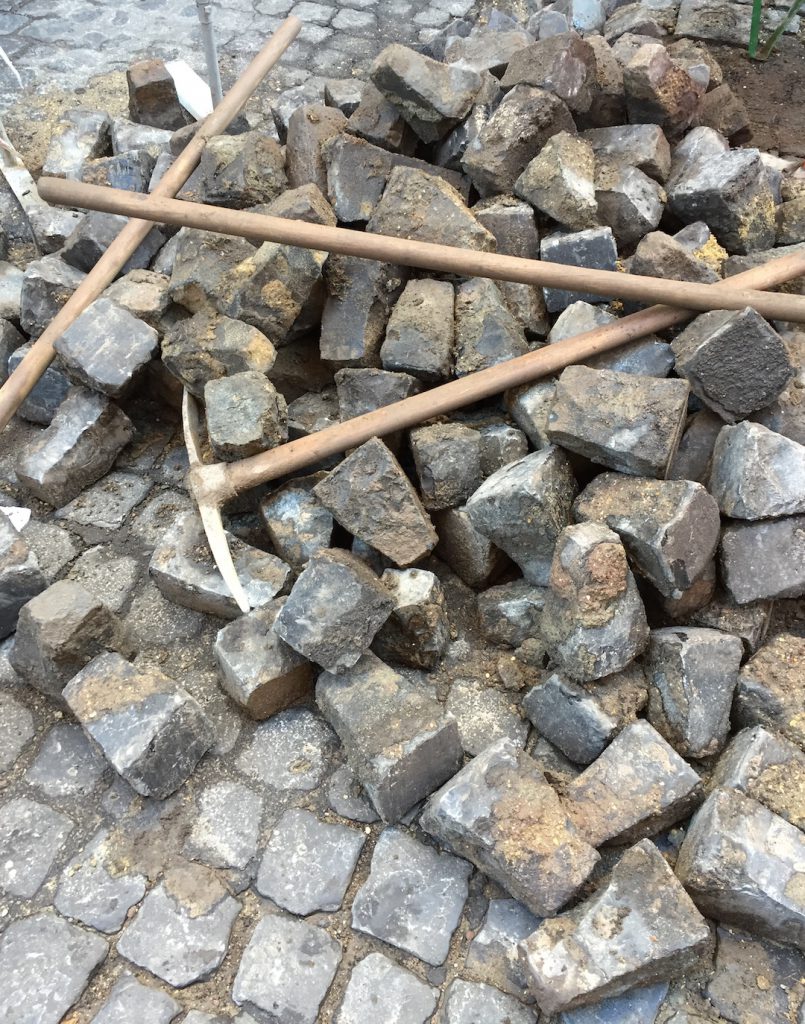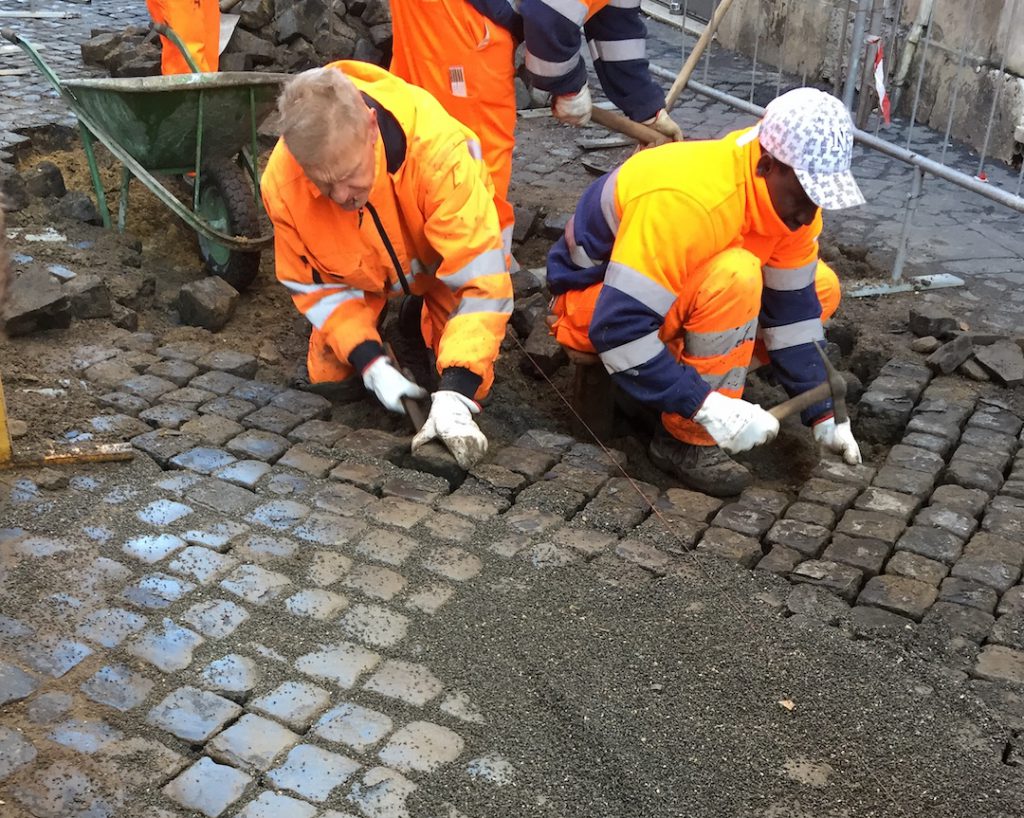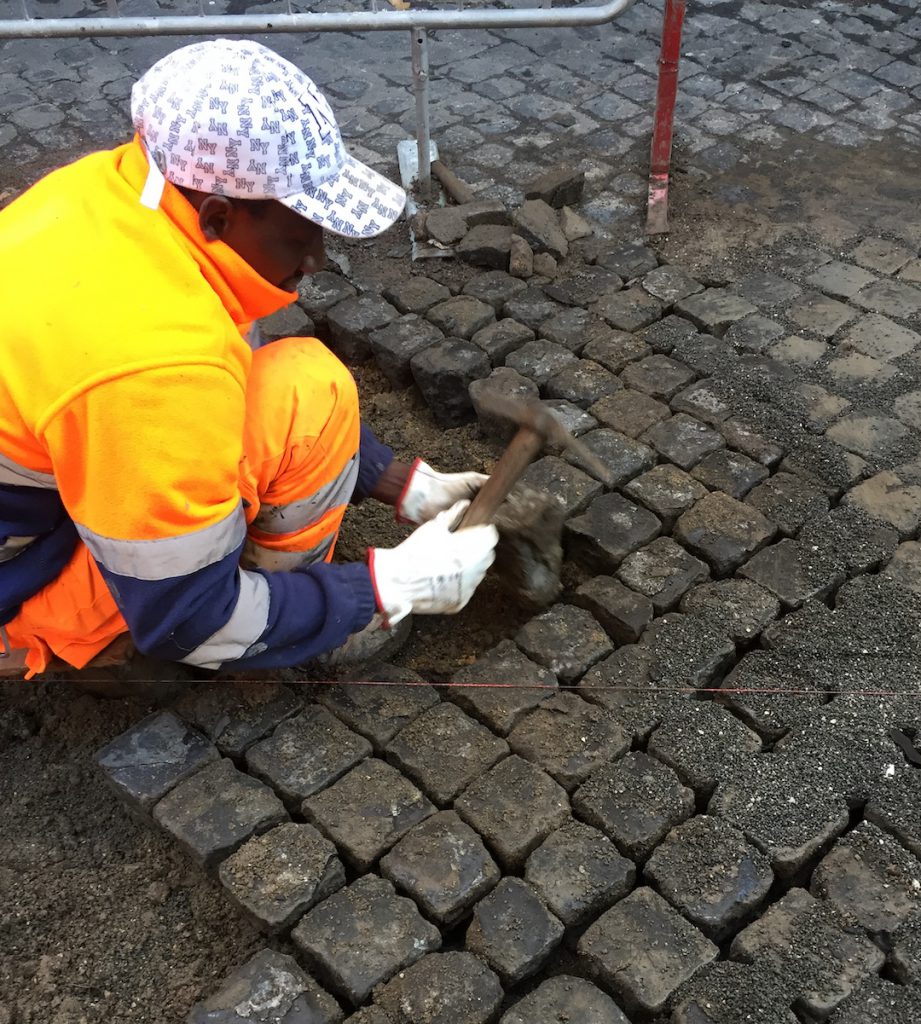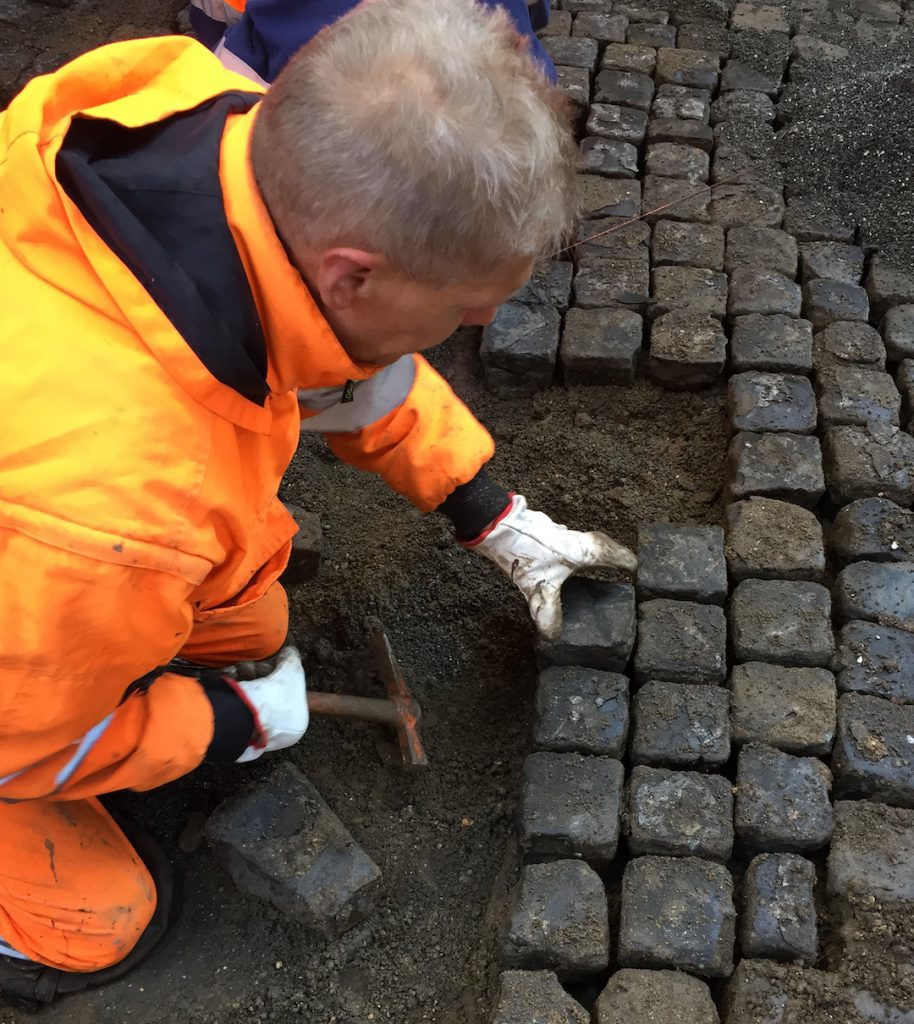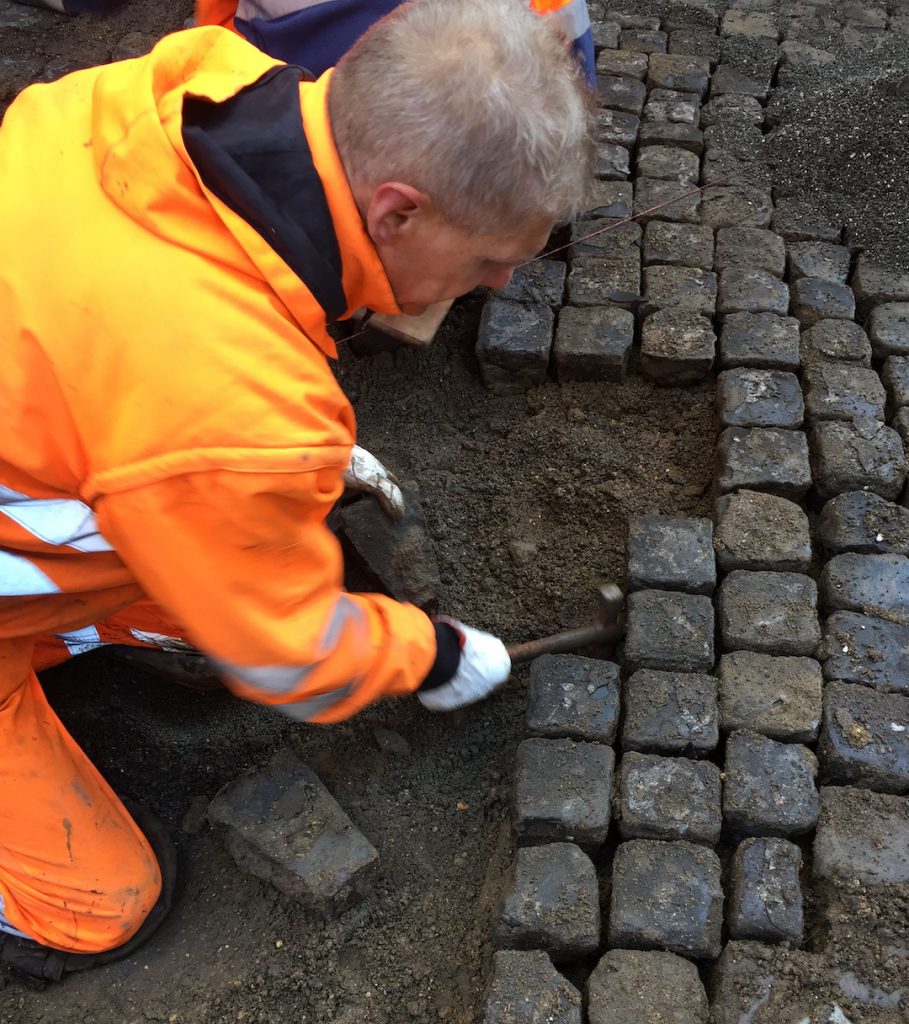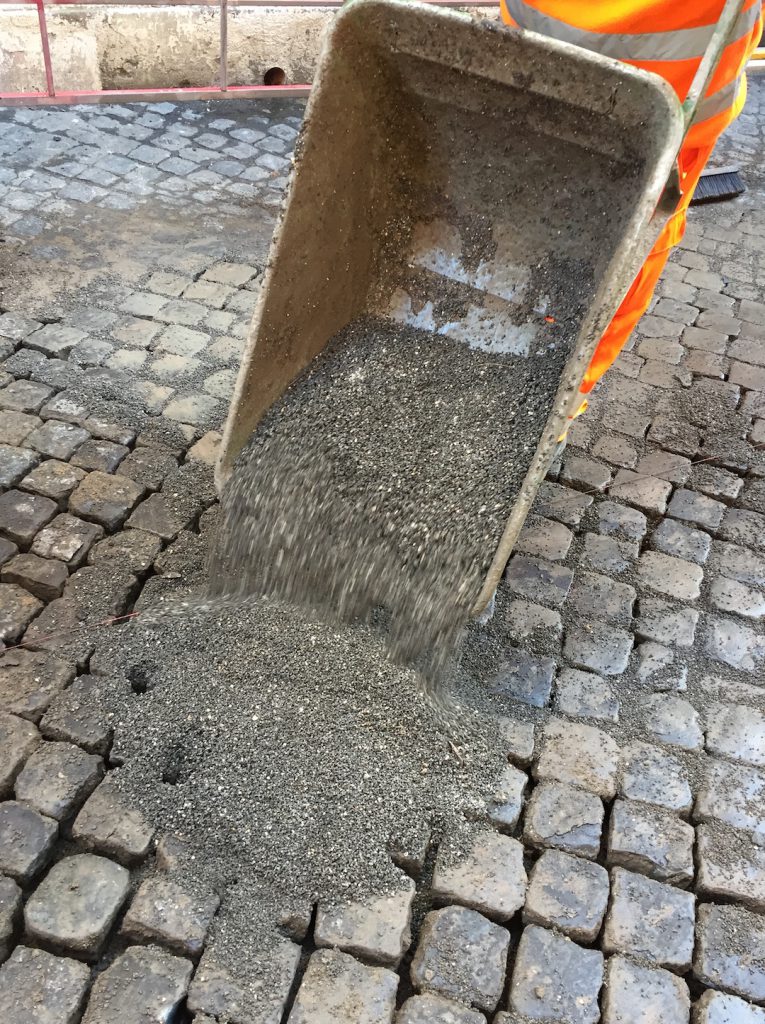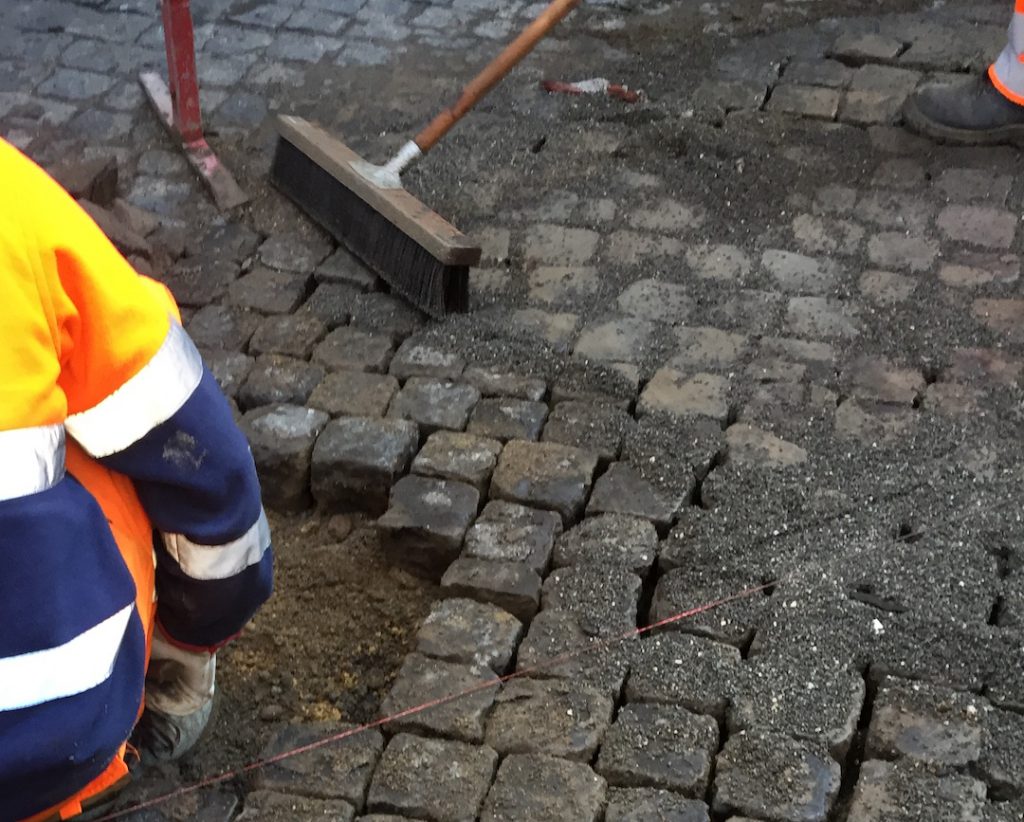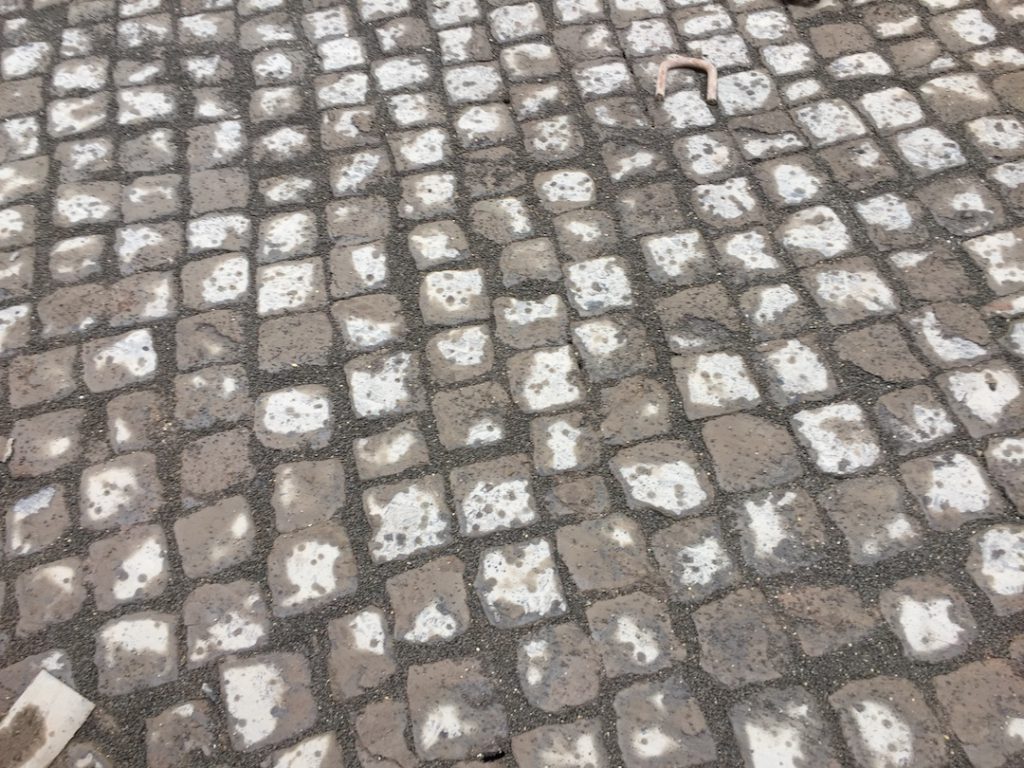All roads lead to Rome. And Rome still leads the world in roads. The streets of the ancient city were paved in huge, irregular blocks of stone known as basolato. Today only a very few segments of such paving survive: along the Via Appia, for example, or in parts of the Forum. But the streets of central Rome are still paved in stone: most retain their sanpietrini (or sampietrini), small, square, regular cobbles.
The skill of the ancient Romans in building roads throughout the empire was essential to their military victories. Many of the straight roads which they laid out are still used by modern thoroughfares, and are immediately recognisable all over Europe. In the Republican era, roads were the responsibility of censors and consuls, who had to see to their maintenance. Consular Roman highways were often provided with a raised kerb and sidewalks (crepidines) and good drainage. The key to a good road, however, lay beneath it, in the preparation of the bed on which the paving stones were laid. For centuries the durable Roman technique was forgotten and it was only in 1811 that John Loudon Macadam rediscovered it, noting that ‘a road made of small broken stone, without mixture of earth, of the depth of ten inches, will be smooth, hard and durable.’ He and his descendants went on to make a fortune out of designing Britain’s turnpikes, which came to be described as ‘Macadam’ or ‘Macadamised’ roads.
In 2019 there were protests from some of Rome’s inhabitants, who complained that the streets were too uneven and were causing accidents. One can sympathise with these worries, but if ever the sanpietrini were to be replaced by the ubiquitous tarmac, as has happened in other historic towns where the ancient paving has been eliminated, the entire feel of Rome would be irrevocably changed. For now, at least, it seems the sanpietrini cobbles are here to stay, preserving the age-old appearance of the streets as a complement to the buildings at either side.
Sanpietrini naturally have to be replaced from time to time, and the centuries’ old method of laying a sandy bed and hammering in each wedge-shaped piece of black basalt by hand is still the only way this can be done. The process includes the shovelling of fine sandy gravel onto the top of the stones at the end. The following series of pictures were taken in 2019, during work on the most recent edition of Blue Guide Rome. (All photos © Alta Macadam)
